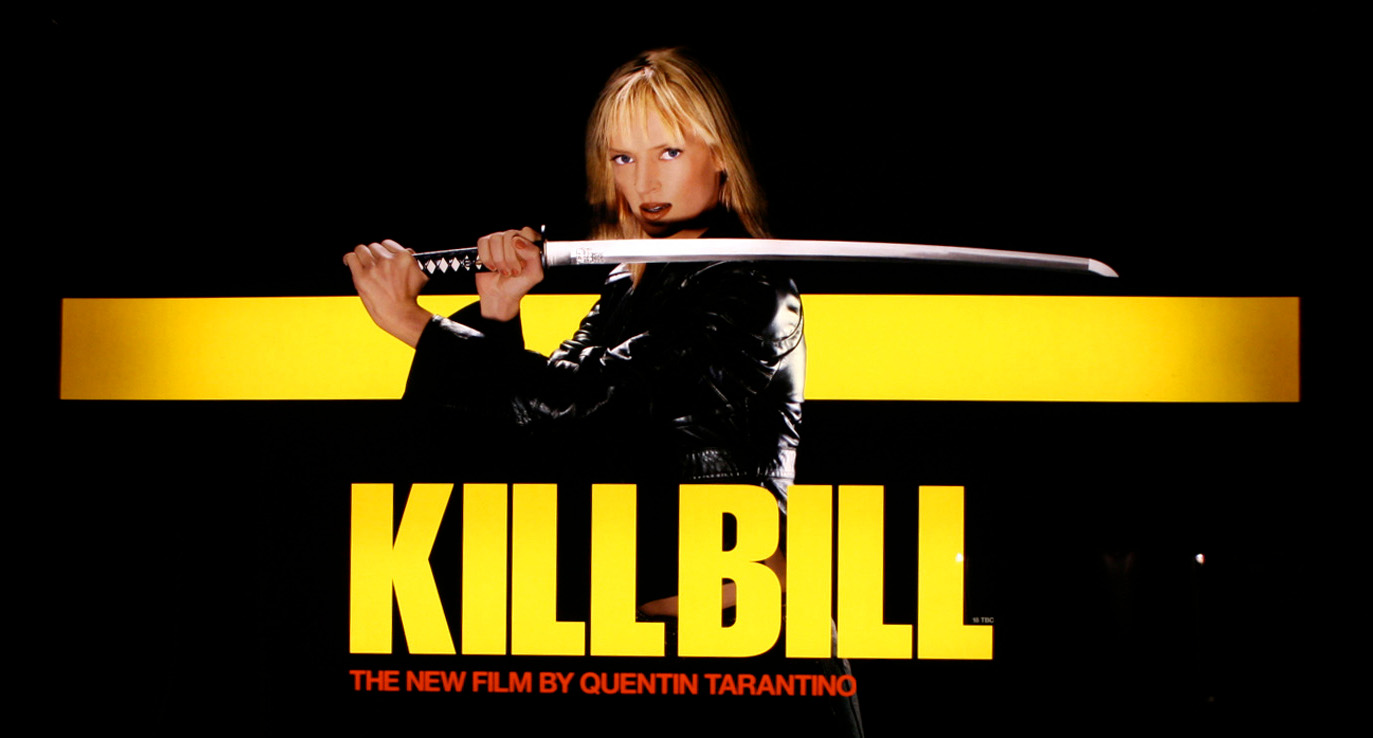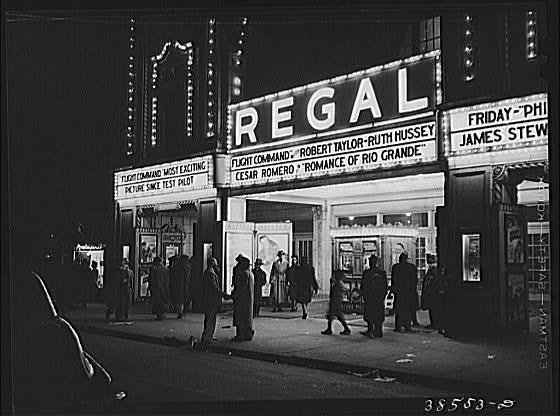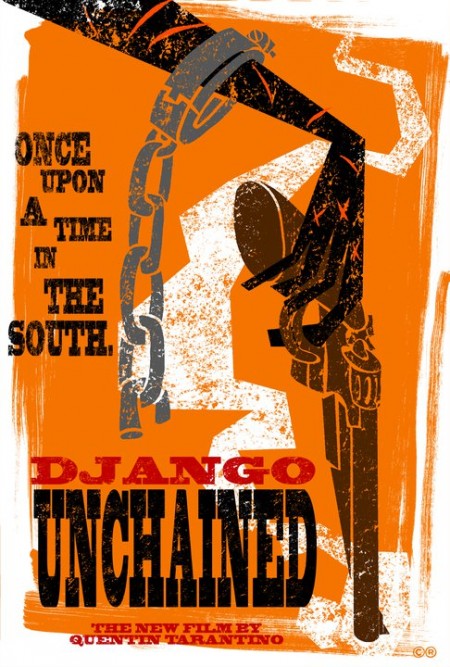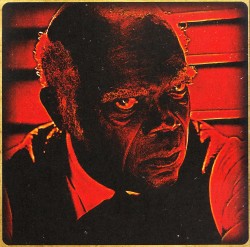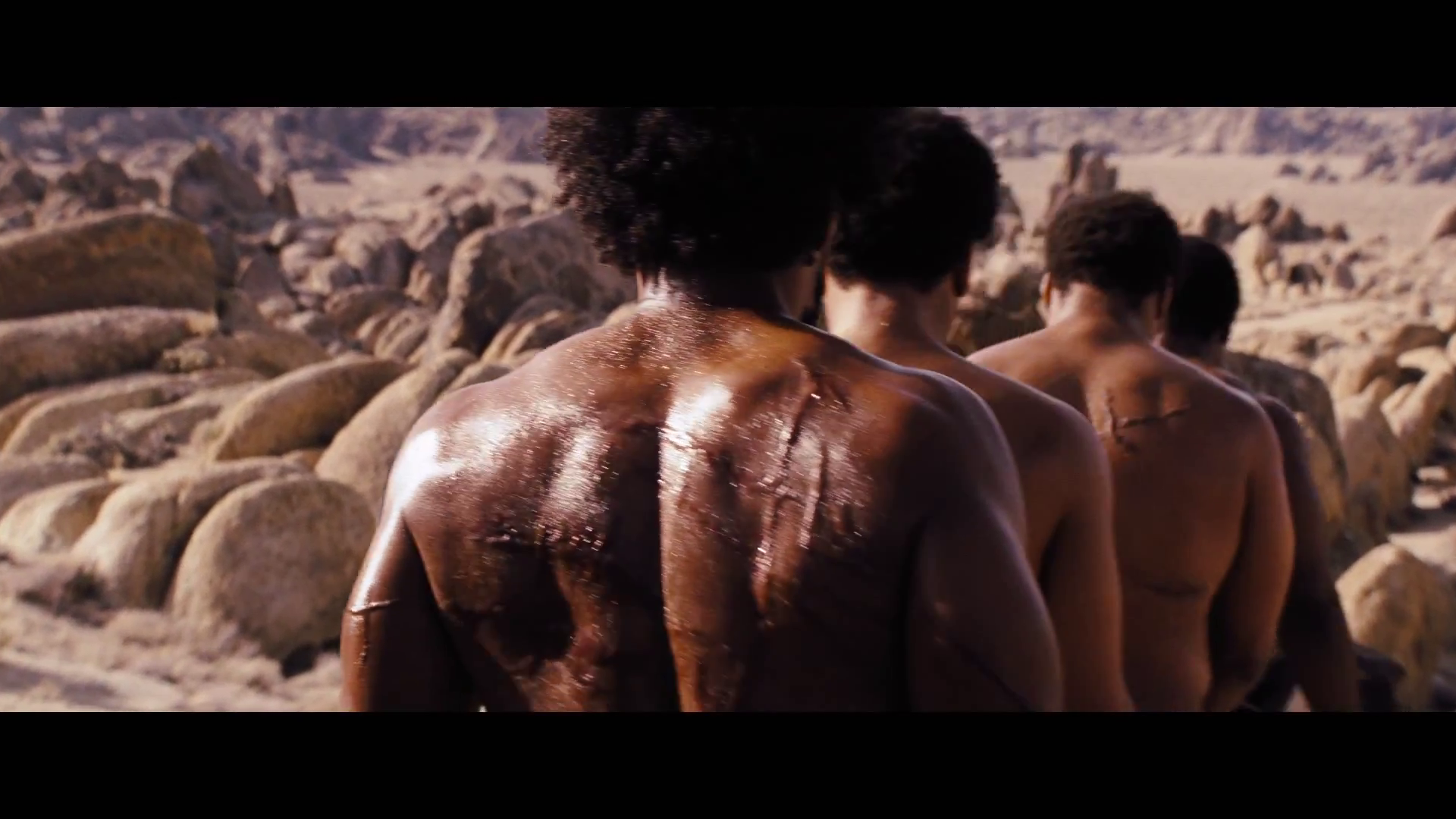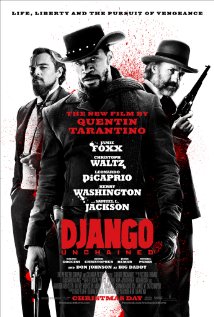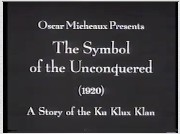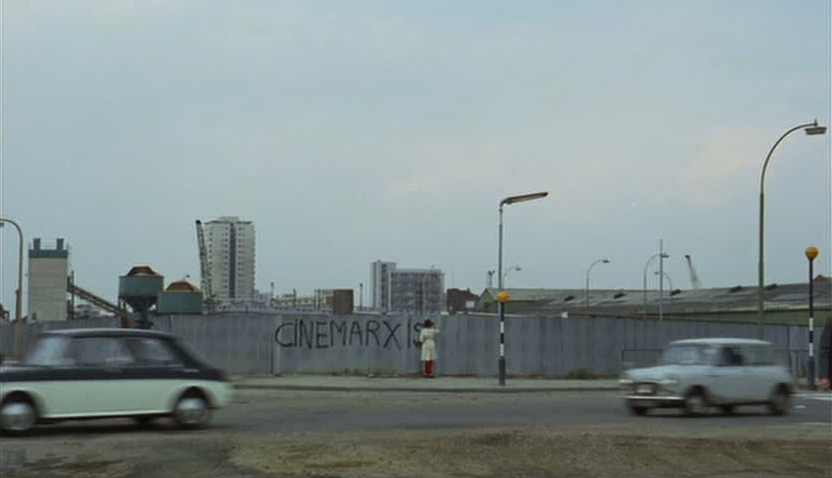Since we’re doing a Django Unchained roundtable I thought I’d republish this. It first appeared way back when in the Chicago Reader.
___________________
It’s hard to believe the acclaim bestowed on this rip-off artist. Second-hand plots, second-hand characters, second-hand themes, all thrown together without regard to narrative probability, but with plenty of gratuitous violence to bring in the groundlings, and — ta daa! A marketing phenomenon is born.
But enough about Shakespeare. Kill Bill isn’t exactly Henry IV, but at least Quentin Tarantino’s two part epic is shallow and derivative. Even fast food commercials these days want you to believe in the sincere virtues of family, community, and up-to-date urban newness. Not Tarantino, thank God. Kill Bill is relentlessly, gloriously glacial — the ravishing Kung Fu battle in the first part unwinds endlessly without narrative function or even, really, suspense — we all know how this is going to turn out, after all. Its only raison d’etre is the choreography and the beauty of the shots. In “Crouching Tiger, Hidden Dragon,” Ang Lee tried to give martial arts films a soul. Fuck that, Tarantino seems to be saying — his version is all cold surface; blank stare as tribute. Empty? Why, yes. But, as it happens, it’s also more true to the source material, and a more thoughtful take on the depersonalized attraction of violence.
Kill Bill 1, like martial arts movies generally, is a mechanized ballet — even the out-of-sequence narrative feels, at this point in Tarantino’s career, more like a reflex than an innovation. Kill Bill 2, on the other hand, is not so much robotic as paralyzed. Everything is Sergio-Leone-extreme close-up and anticlimax. Bud (Michael Madsen), the ex-killer, working as a bouncer in a girlie bar, is painfully chewed out by his thoroughly despicable boss — we expect him to go ballistic and trash the place, but instead he just mumbles and goes off to clean the plugged toilet. The super-martial-arts-guru played by Gordon Liu dies from eating poisoned fish-heads. Our heroine, the great swordswoman, keeps gearing up for a awesome display of virtuosity and then getting shot — the first time with rock salt, the second, bizarrely, with a truth serum dart that forces her to confess absolutely nothing of consequence. David Denby in the New Yorker speaks for many critics when he claims that “such scenes don’t work,” but surely they’re not supposed to, any more than the Simpsons is intended to be dramatically intense. This isn’t homage — it’s slow-motion parody. Action-movie clichés — revenge, honor, violence — all end up looking not merely dumb, but boring.
Tarantino’s usually viewed as simply a fan of movies. His films are supposed to be giddy hipster pleasures; an excuse to show off, the accusation goes; at his best he merely reproduces the stylistic tics of his heroes. Thus, for Denby, the fact that Gordon Liu comes off as “a prancing little snit” is a mistake; martial-arts masters should be treated with respect, right?
On the contrary, Tarantino’s studied refusal to fulfill genre expectations is the reason to watch him. He doesn’t want to make a Hong Kong action movie, or a blaxploitation flick: he wants to have a conversation about one. And that’s what his movies seem like: long, dramatic arguments with other filmmakers and other films. Probably the most enjoyable part of Jackie Brown, for me, was the treatment of Robert DeNiro, whose portrayal of an utterly inept, hen-pecked wannabe bad-dude deftly upended decades of macho posturing — this guy, Tarantino seems to say, is just another honky who wants to be tough. Similarly, in Pulp Fiction, gangland thugs, so celebrated by Scorcese, Coppola, et. al., are presented as moronic sit-com buffoons.
It’s no accident that Tarantino seems most masterful when skewering the primal histrionics of a method-actor like DeNiro. The pulp movies Tarantino draws on are, as a rule, obsessed with visceral responses — sex, blood, suspense, shock. Tarantino is interested in these things too, but only second-hand, as odd collectables you might find on display in a museum. He doesn’t want to create excitement, but to take it apart and see what makes it tick. The famous torture scene in Reservoir Dogs, set to a feel-good seventies sound-track, was disturbing not because it was so immediate, but because it was distanced: Tarantino seems to be watching you with his head slightly to one-side, clipboard in hand, asking, “Well, now, how did you feel about that?” In Kill Bill 2, Elle (Daryl Hannah) sics a black mambo on Bud, then reads him pertinent facts about the snake as he lies paralyzed. That’s Tarantino all over; you can bet that if he were dying in horrible agony, he’d still want to know how many milliliters of venom had entered his bloodstream.
Every so often, though, Tarantino does attempt to generate the kind of catharsis that he usually makes it his business to mock. The results, needless to say, are not pretty — a vivisectionist may be good at taking the dog apart, but he’s not the person to go to if you want to buy a pet. Of all his movies, Kill Bill seems the one in which Tarantino has most consistently attempted earnestness and, as a result, it’s his weakest effort. The character of The Bride (Uma Thurman) is a case in point. She’s clearly patterned on Clint Eastwood’s Man With No Name — an ectomorphic, blond, impassive killer. Fun could certainly be had with this character, and Tarantino indisputably hits some of the right notes; after digging herself out of her own coffin, for instance, The Bride, covered in dirt and looking like death, calmly walks into a diner and asks the startled counter-attendant for a glass of water.
Before being buried alive, however, The Bride totally loses her composure, weeping hysterically. This would be okay if Tarantino had actually cast Eastwood in the role. But Thurman is a woman, and seeing a woman fall apart in an action movie doesn’t tweak convention; it fulfills them. Of course, The Bride pulls herself together and escapes in an utterly preposterous and enjoyable sequence, but what’s the point of her outburst? To increase suspense? To make us identify with her? To make her more believable? Tarantino can be brilliant when he pushes ideas to their limits, or when he undercuts them. But here he’s doing neither; he’s using tired techniques to achieve tired ends. Thurman’s desperate emoting doesn’t comment on Sergio Leone — at best, it merely replicates the supposed “realism” of Bruce Willis’ average-joe action hero in Die Hard.
The misguided desire to turn Thurman’s character into an actual person is underlined by her christening; in the first movie, she’s nameless, in the second, we learn that she’s called “Beatrix.” But it’s her final appellation that really causes trouble. In the film’s last scene, we see a close-up of Thurman’s face and printed over it the information that she is now known as “Mommy.” Motherhood is, in fact, the central theme of Kill Bill. It’s also one of the most loaded and thorny topics in our culture, and by the end of the second part of the movie, its clear that Tarantino, in confronting it, has suffered a catastrophic failure of nerve.
Things start out all right. Many pulp movies center around plots involving brutality committed against or witnessed by children: “Once Upon a Time in the West,” for example, or, more recently, “Batman.” But in Kill Bill 1, Tarantino features not just one act of violence, but several. To open, Bill supposedly kills The Bride’s unborn child. Then, in an animated sequence we see a young girl literally covered in the blood of her murdered parents. This is O-ren Ishii (Lucy Liu) whose horrifying experience inevitably inspires her to become a ruthless assassin and the crime-lord of Tokyo.
And finally there’s the movie’s first extended sequence. The Bride has tracked ex-assassin Vernita Green (Vivica Fox) to the later’s suburban home; the two immediately begin an extended, violent kung-fu battle, complete with kitchen knives, but they are interrupted by the arrival of Green’s four-year old daughter Nikki (Ambrosia Kelley). The Bride, it turns out, doesn’t want to kill the child’s mother in front of her. Green pushes for more, suggesting that, for the sake of the child, the Bride should abandon her revenge. But the Bride is unconvinced, she refuses to let Green off the hook just for “getting knocked up.” In the end, she does murder the mother in front of the daughter, and then apologizes woodenly: “When you grow up, if you still feel raw about it, I’ll be waiting.” There’s been much speculation on the net about a sequel starring a vengeful Nikki, and rightly so. After all, children in this world aren’t the innocent victims of violence — they’re excuses for it — convenient plot devices. Oren Ishi’s seventeen-year old, psychotic bodyguard Gogo (Chiaki Kuriyama) who wears school-girl outfits is emblematic; a kind of living fetish of blood and gore.
Kill Bill 1 suggests that we enjoy watching our children get hurt. In Kill Bill 2, Tarantino merely notes that children have aggressive impulses — a much less daring thesis. Certainly there’s nothing particularly daring about the portrayal of Beatrix’s four-year-old daughter B.B. (Perla Haney-Jardine), who, it turns out, did not die after all. Bill has raised her as a normal, upper-middle-class suburban youth who enjoys playing with toy guns. She also deliberately killed her pet goldfish, but her real function is to humanize her mother. After rediscovering the child, Beatrix kills Bill, ends her crusade of vengeance, and begins a new life as a loving mother –inaugurated by another extended crying jag. B.B. herself, however, barely exists; she’s little more than a stand-in for hundreds of redemptive movie children. Tarantino could have made her a hyperbolically saccharine sit-com clone; he could have made her a spunky bad seed like John Connor in James Cameron’s motherhood-obsessed Terminator 2; he could have made her a ninja-assassin hell-bent on avenging her father’s death. Instead, he gives her an obligatory quirk (she likes watching “Shogun Assassin” before bed) and otherwise treats her with an unbecoming reverence. It’s as if he’s afraid to touch her.
Tarantino isn’t usually considered a cautious director. But in his scenes about motherhood he is pulling his punches, and the strain eviscerates his writing. Thus the scene in which Beatrix discovers, using an over-the-counter test, that she’s pregnant. Moments later an assassin bursts into her hotel room. Hijinks ensue, but finally the assassin accepts that Beatrix is with child. This time the plea of “but the children!” which was so ineffective in the first part of the movie, works like a charm. Looking through the shotgun-hole she’s blasted in the door, the assassin intones “Congratulations,” a punchline predictable and saccharine enough to have come out of a third-rate, by-the-numbers Hollywood action-comedy like Police Academy.
Tarantino’s never going to make even a first-rate action comedy, of course; he’s simply too talented a craftsman to churn out a scattershot masterpiece like Airplane. But if he doesn’t take care, he could create something significantly worse. Kill Bill’s more maudlin moments queasily echo the efforts of Jim Jarmusch, a director who, instead of puncturing genre conventions, inflates them with pretentious philosophizing and waits for the critics to call it art. It would be a shame if Tarantino went further down this road. Truly talented satirists are few and far between, but film-schools are full of myopic white boys eager to tell the rest of us what it means to be human.
_______________
